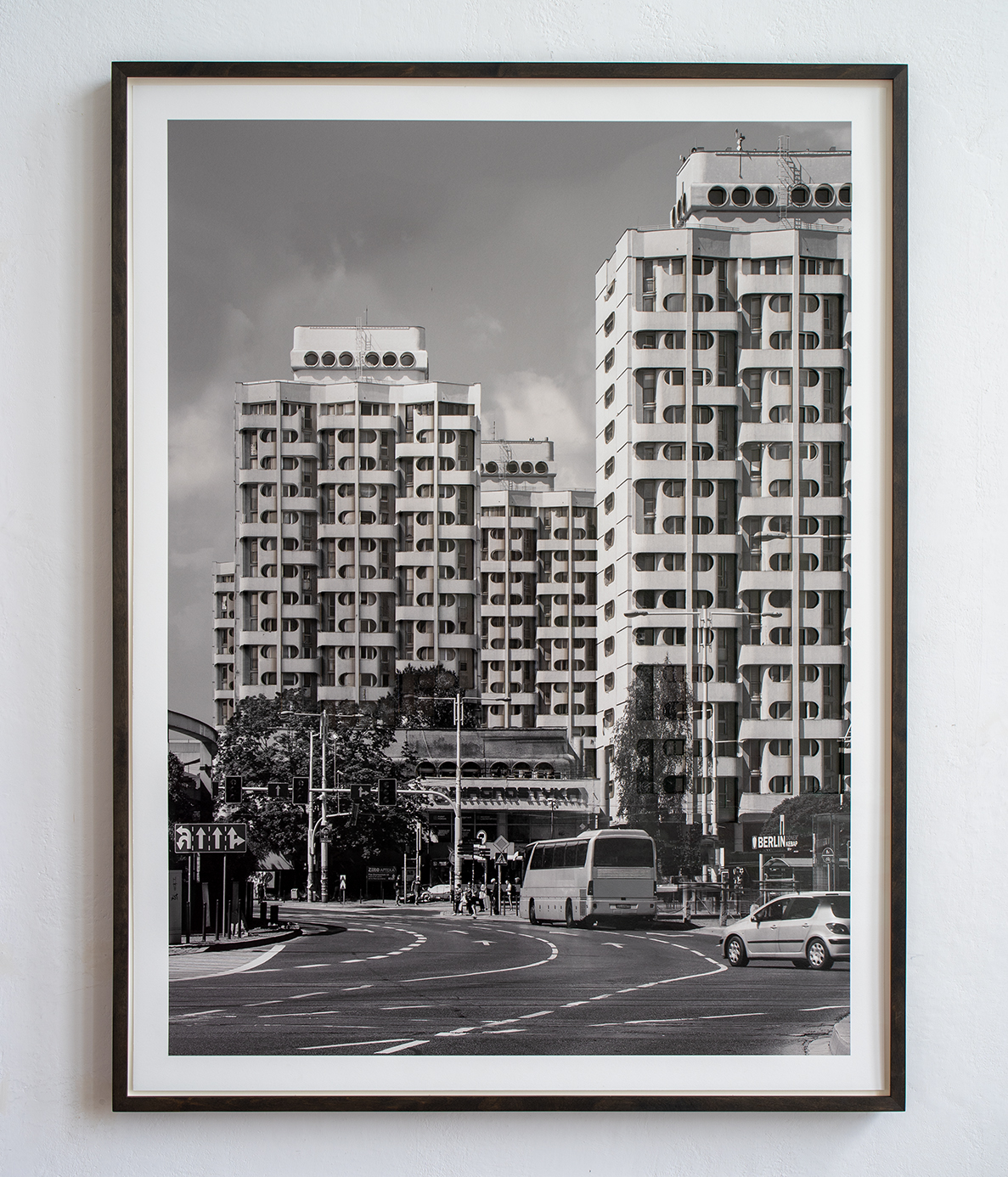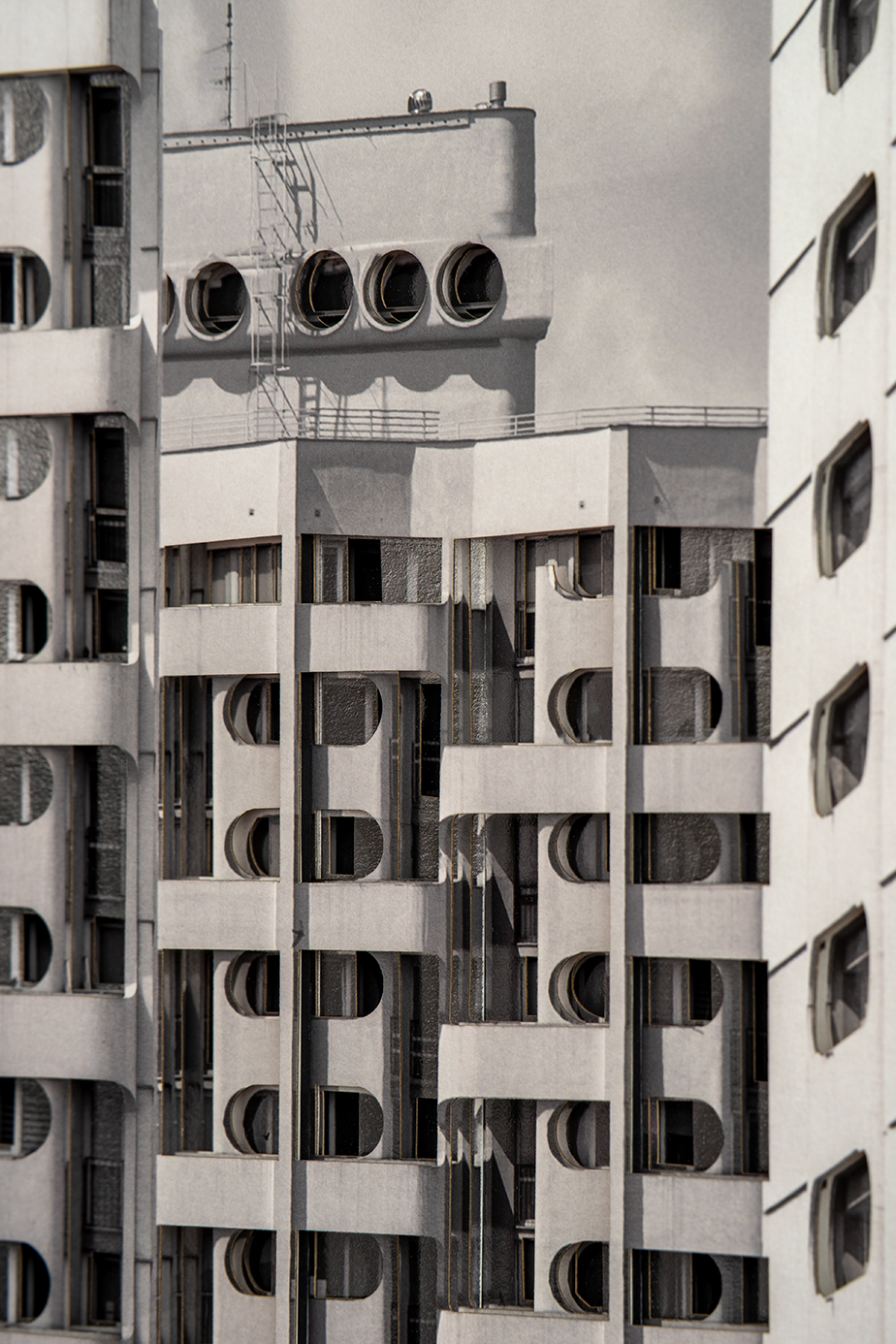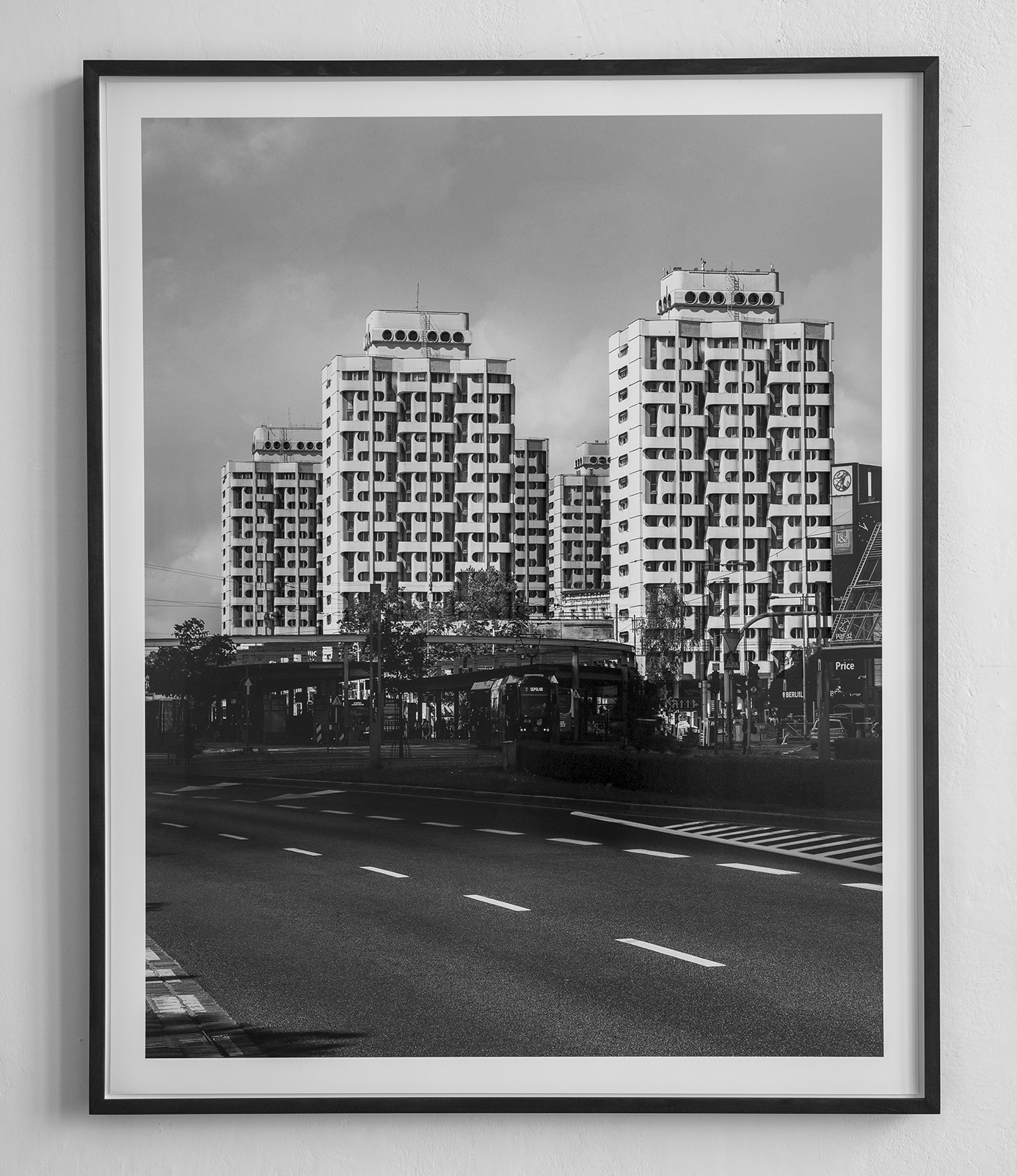Gerüst und Gewand, 2024



Gerüst und Gewand I + II
Fine Art Prints mit Lasercuts bearbeitet
102 x 77cm, 102 x 82 cm
2024
Gerüst und Gewand
Tragen und getragen werden - die Architektur der Moderne hat es ermöglicht die Außenhaut als eine vom Tragwerk unabhängige Haut zu gestalten und die Hülle von der statischen Konstruktion zu trennen. Die Fassade dient neben der Trennung des Innenraums vom Außenraum oftmals als Träger für Dekoration oder auch für die Information über die Funktion eines Gebäudes. Das Prinzip der Bekleidung lässt die Fassade als ein Spiel des Ver- und Enthüllens erscheinen. Bei dem ikonischen Wohn- und Geschäftskomplex am Platz Grundwaldzki von Jadwiga Grabowska-Hawrylak wird die Idee der Kleidung durch die gekurvten Betonplatten der Fassade besonders deutlich. Die schwungvolle, verspielte Formfindung ist herausragend für eine Zeit, die von der sozialistischen Grundidee einer egalitären, gerechten Gesellschaft und des Kollektivismus geprägt ist und in der die Ästhetik oftmals zugunsten von Zweckmäßigkeit oder Einsparungen zurückgestellt wurde. Durch meinen Eingriff mit Laserschnitten in die Fotooberfläche erscheint die Fotoarbeit wie ein Modell. Damit möchte ich den zukunftsweisenden, utopischen, fast futuristischen Charakter der Gebäude aus den 70er-Jahren verstärken. Die Laserschnitte nehmen die Grundformen der Fassade auf und schaffen durch diese Abstraktion einen Fokus auf die wesentlichen Elemente des Architekturentwurfs. Gleichzeitig lässt die haptische Verdoppelung der geometrischen Strukturen das Bild hyper-real erscheinen, wie eine Miniaturwelt, in die man hereintreten könnte. Die Details laden dazu ein, näher an das Bild heran zu treten. Der Bildraum wird geöffnet. Die Unterteilung in vier vertikale Schichten erinnert an Kulissen in einem Bühnenbild. Der Betrachter, der seitlich an dem Bild vorbeigeht, erlebt eine ähnliche Suggestion von Räumlichkeit wie der Passant im Stadtraum. Von vorne betrachtet erscheint die Abbildung als Hybrid zwischen Bild und räumlicher Darstellung. Von der Seite betrachtet zerfällt der übersteigerte Illusionismus und man blickt sozusagen hinter die Kulissen, auf Strukturen, die sich immerzu wiederholen anstatt neue Türen zu öffnen. Als symbolisch aufgeladenes Bauwerk steht das geliebte und gehasste Sedesowce für modernistische Pionierarbeit, aber auch für gescheiterte Utopien des Sozialismus.
Scaffolding and garment
Carrying and being carried - modern architecture has made it possible to design the outer skin as a skin independent of the supporting structure and to separate the shell from the static construction. In addition to separating the interior from the exterior, the façade often serves as a support for decoration or for information about the function of a building. The principle of cladding makes the façade appear as a game of concealment and revelation. In the iconic residential and commercial complex on Grundwaldzki Square by Jadwiga Grabowska-Hawrylak, the idea of cladding is particularly evident in the curved concrete slabs of the façade. The bold, playful design is outstanding for a time that was characterized by the basic socialist idea of an egalitarian, just society and collectivism and in which aesthetics were often put aside in favour of practicality or savings. Through my intervention with laser cuts in the photographic surface, the photographic work appears like a model. In this way, I want to reinforce the forward-looking, utopian, almost futuristic character of the buildings from the 1970s. The laser cuts take up the basic shapes of the façade and, through this abstraction, create a focus on the essential elements of the architectural design. At the same time, the haptic duplication of the geometric structures makes the image appear hyper-real, like a miniature world that you could step into. The details invite you to step closer to the picture. The pictorial space is opened up. The division into four vertical layers is reminiscent of sceneries in a stage set. The viewer, who walks past the picture from the side, experiences a similar suggestion of spatiality as the passer-by in the urban space. Viewed from the front, the image appears as a hybrid between picture and spatial representation. Viewed from the side, the exaggerated illusionism falls apart and one looks behind the scenes, so to speak, at structures that are constantly repeated instead of opening new doors. As a symbolically charged building, the beloved and hated Sedesowce stands for modernist pioneering work, but also for the failed utopias of socialism.